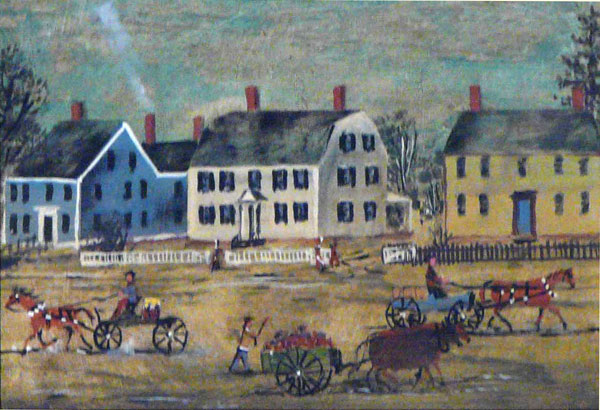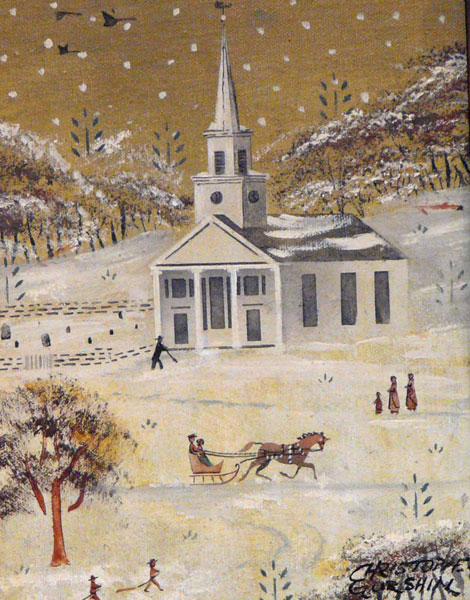
Home Structural Products & Services, Stairlifts
Structural Products & Services, Stairlifts
Furniture, Clocks,
Accessories
Antiques, Folk Art,
Fine Art, Auction Houses
![]()
ANTHEM AMERICANA
For the non-expert, contemporary Americana art can seem simplistic if you don’t give it a chance. Until recently, I was included in the large group, maybe the majority, of people who pigeon-hole recent Americana painting as being something less than fine art.
The best thing about editing CTOldHouse.com is that it has stretched my appreciation of period-related arts and crafts, frequently challenging my lifelong presuppositions. The end result, hopefully, is to take readers along on the ride to discovery.
In the magazine A Primitive Place I had come across a few American paintings by Christopher Gurshin that intrigued me. Not being an expert or a critic, I couldn’t put my finger on why these images tugged at me so insistently. I decided to call Christopher Gurshin at his studio in Glastonbury. When he answered the phone I was a bit nonplussed and was having a difficult time articulating my real question. “Rufus Porter!” he told me. “You have to check out Rufus Porter.”
Rufus Porter, I found out, was a self-taught artist, inventor and editor who was born in Boxford, Massachusetts in 1792 and died in West Haven, Connecticut in 1884. During his lifetime he did everything from travel as an itinerant portrait and mural painter to founding Scientific American magazine. Amazon had a book for sale , Rufus Porter Rediscovered , written in 1968 by Jean Lipman of Wilton, who, along with Alice Winchester of Danbury , the former editor of The Magazine Antiques, had organized the landmark 1974 traveling exibit “The Flowering of American Folk Art.”
In her book on Porter, Jean Lipman calls him “an active crusader for an honest American tradition in painting.” She explains that he was “the first American to deliberately formulate, practice and promote the ‘natural’ as against the academic approach to painting; the first to point to the rich possibilities of design as opposed to academic realism; the first to see the homely beauty of rural American farms and villages as an unparalleled subject matter for American landscape painting…Porter suggested painting, and himself painted, not only the appearance but the very spirit of rural New England in his time.” The key to Rufus Porter, Lipman tells us, was his belief “That there is no differentiation between the practical and the fine arts. All painting was a simple, practical undertaking, whether it concerned a house, window shade, portrait or landscape.”
The late Americana painter Charles Wysocki brought Rufus Porter’s vision into the twentieth century, and Christopher Gurshin continues it into the twenty first.
|
|
|
|






